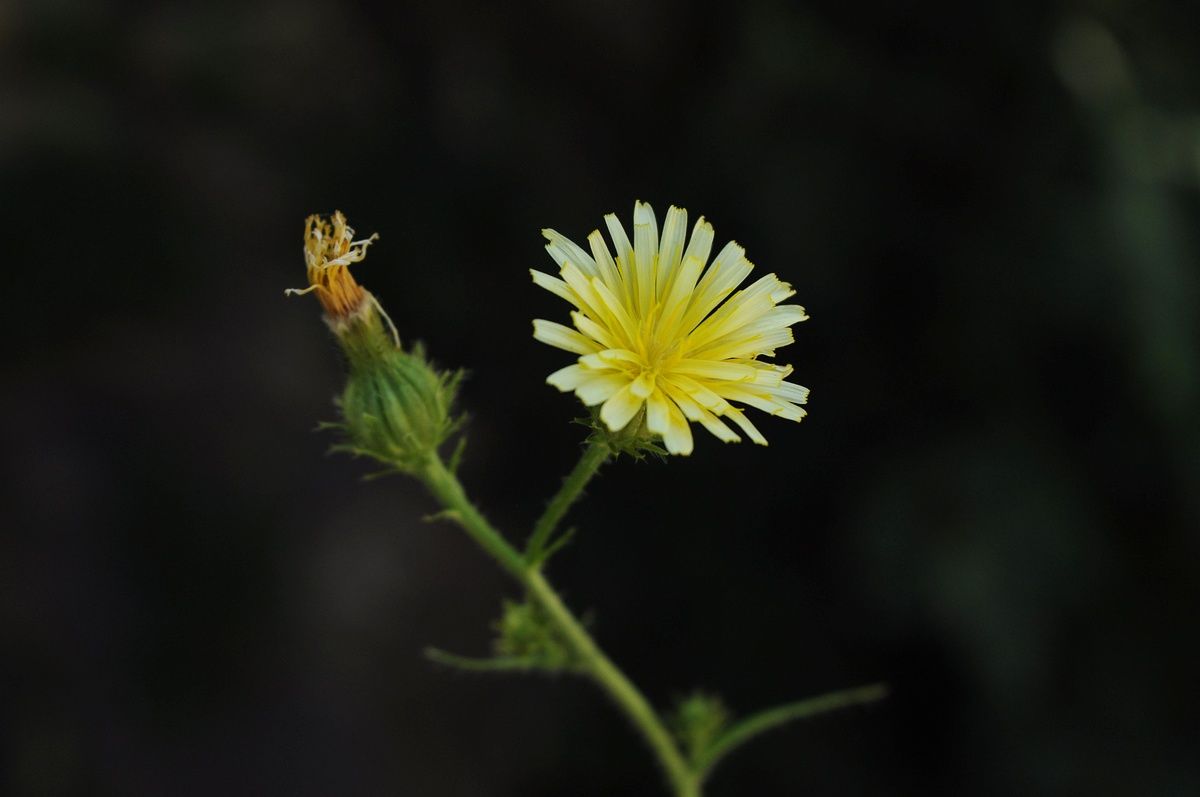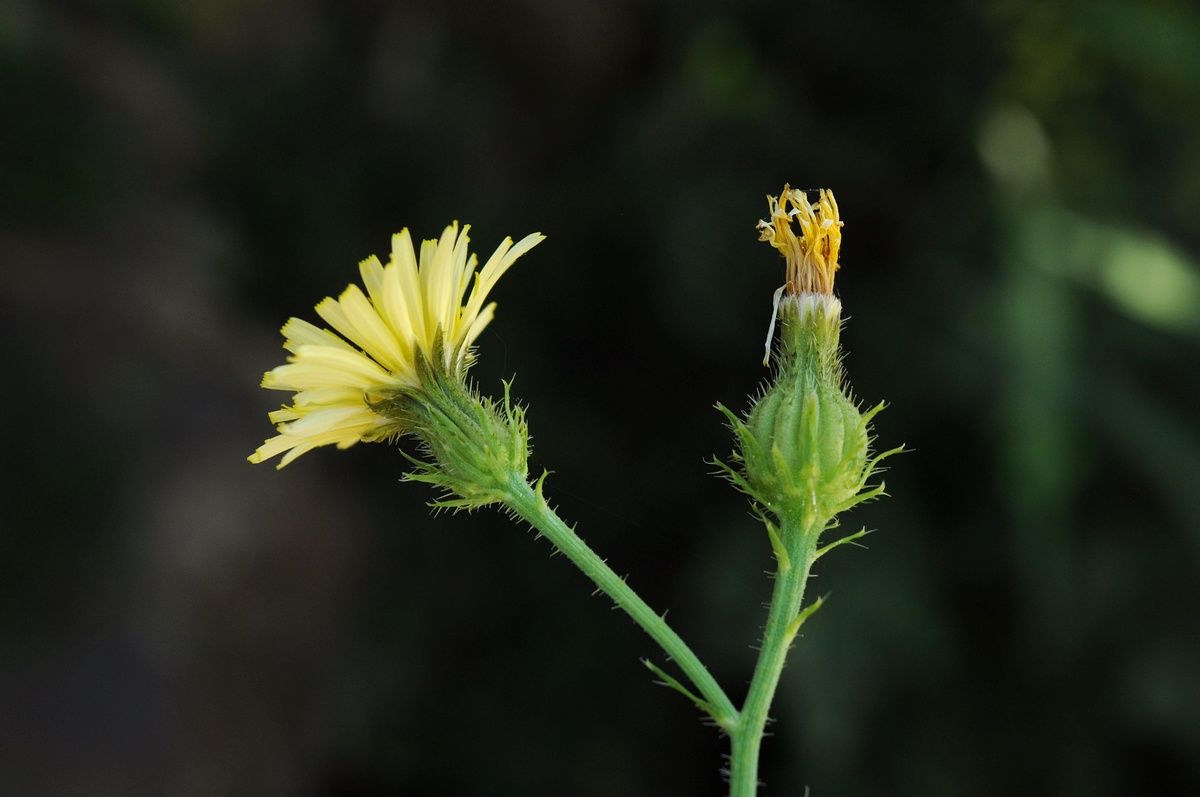Family: Asteraceae
Author: L.
Bibliography: Sp. Pl.: 792 (1753)
Year: 1753
Status: accepted
Rank: species
Genus: Picris
Vegetable: False
Observations: Temp. Eurasia
Description
Hawkweed ox-tongue, scientifically known as Picris hieracioides, is an intriguing and resilient plant that belongs to the Asteraceae family. This plant was first described in the landmark work “Species Plantarum” in 1753 by the renowned botanist Carl Linnaeus, commonly abbreviated as L.
Native to temperate regions of Eurasia, Hawkweed ox-tongue has adapted well to its environment, thriving in a variety of habitats, including disturbed soils, grasslands, and roadside verges. Its common name is derived from the unique appearance of its leaves, which resemble the tongue of an ox, combined with a superficial similarity to the hawkweeds.
The plant is characterized by its robust, often branched stems and rough, hairy leaves, which can provide a somewhat prickly texture to touch. The leaves are typically elongated and have a pointed shape, contributing to its distinctive name. During its blooming period, Hawkweed ox-tongue produces bright yellow, daisy-like flowers. These flowers are not only striking in appearance but also serve as an important nectar source for a variety of pollinators, including bees and butterflies.
Given its robust nature, Picris hieracioides can often be found in less than hospitable locations, making it a common sight along roadsides and in waste areas. Its presence in these environments signifies its role in colonizing and stabilizing disturbed soils, thereby supporting the initial stages of ecological succession.
Hawkweed ox-tongue is a fascinating example of plant adaptability and resilience, thriving in temperate climates across Eurasia. Through its widespread presence and distinctive features, it plays a crucial role in local ecosystems, particularly in providing resources for pollinating insects. The story of Picris hieracioides is a testament to the intricate balance of nature and the enduring legacy of Linnaean classification.
Common Names
Ita: aspraggine comune
Nep: ban dudhe
Nor: beiskeblom, engsvingel, grannsvingel
Swe: bitterfibbla, bittermjölke, finsvingel, rörsvingel, skuggsvingel, ängssvingel
Deu: bitterkraut, gewöhnliches bitterkraut, gewöhnliches bitterkraut i.w.s., habichtskrautähnliches bitterkraut, stacheliges gewöhnliches bitterkraut
Sqi: cifur si këmashën
Dan: eng-svingel, forskelligbladet svingel, ru bittermælk, strand-svingel
Pol: goryczel jastrzębcowaty, goryczel jastrzębcowy
Jpn: hama-kōzorina
Fin: hapsilampaannata, keltanokitkerö, nurminata
Isl: havingull
Eng: hawkweed, hawkweed oxtongue, hawkweed picris, ox-tongue, hawkweed ox-tongue, oxtongue
Fra: herbe aux vermisseaux, picride fausse épervière, picris fausse épervière, picride fausse-épervière, picris fausse-épervière
Ces: hořčík jestřábníkovitý
Est: kare mõrkjas
Lav: mauragu rūgtpiene
Lit: vanaginis kartylis
Nld: echt bitterkruid
Rus: горлюха ястребинковидная
Bul: мурицелова румянка, рунянковидно горичивче
Ron: ярба гэий
Hye: դառնիճ ճուռակախոտանման
Ara: مُرَّيْر صَقْري
Nno: beiskeblom
Nob: bitterblom
Cym: gwylaeth chwerw, gwylaeth yr hebog
En: Hawkweed Ox-tongue, Hawkweed oxtongue
Fr: Picris de Villars, Picride pauciflore, Picride à fleurs peu nombreuses, Picride très élevée, Picride éperviaire, Herbe aux vermisseaux
Synonyms
- Picris umbellata var. hispidissima (Sennen & Gonzalo)
- Picris hieracioides subsp. barcinonensis (Sennen)
Distribution
- Albania (native)
- Altay (native)
- Assam (native)
- Austria (native)
- Baltic States (native)
- Bangladesh (native)
- Belarus (native)
- Bulgaria (native)
- Central European Rus (native)
- China North-Central (native)
- China South-Central (native)
- China Southeast (native)
- Corse (native)
- Czechoslovakia (native)
- East European Russia (native)
- East Himalaya (native)
- France (native)
- Germany (native)
- Great Britain (native)
- Greece (native)
- Hungary (native)
- Ireland (native)
- Italy (native)
- Kazakhstan (native)
- Kirgizstan (native)
- Krasnoyarsk (native)
- Krym (native)
- Lebanon-Syria (native)
- Manchuria (native)
- Mongolia (native)
- Myanmar (native)
- Nepal (native)
- North Caucasus (native)
- North European Russi (native)
- Northwest European R (native)
- Pakistan (native)
- Poland (native)
- Portugal (native)
- Romania (native)
- Sicilia (native)
- South European Russi (native)
- Spain (native)
- Switzerland (native)
- Tibet (native)
- Transcaucasus (native)
- Turkey (native)
- Ukraine (native)
- West Himalaya (native)
- West Siberia (native)
- Yugoslavia (native)
- Alaska (introduced)
- Connecticut (introduced)
- Illinois (introduced)
- Kentucky (introduced)
- KwaZulu-Natal (introduced)
- Maryland (introduced)
- Masachusettes (introduced)
- Michigan (introduced)
- Missouri (introduced)
- New Jersey (introduced)
- New York (introduced)
- North Carolina (introduced)
- Ohio (introduced)
- Ontario (introduced)
- Pennsylvania (introduced)
- Rhode I. (introduced)
- Tennessee (introduced)
- Vermont (introduced)
- Virginia (introduced)
- Washington (introduced)
Additional Images
Leaf
Taken Nov 24, 2021 by ada (cc-by-sa)
Taken May 27, 2020 by Joassin Vladimir (cc-by-sa)
Taken Nov 26, 2020 by simone simone (cc-by-sa)
Taken Nov 25, 2022 by beatrice chiappini (cc-by-sa)
Taken Oct 22, 2021 by pierre vittori (cc-by-sa)
Taken Apr 16, 2021 by Marilyne Renou-Garcias (cc-by-sa)
Taken Feb 11, 2022 by Giulia (cc-by-sa)
Flower
Taken Oct 16, 2021 by elliuonerg (cc-by-sa)
Taken May 27, 2020 by Joassin Vladimir (cc-by-sa)
Taken Jan 12, 2022 by Bernard Sudan (cc-by-sa)
Taken May 22, 2022 by 1F_ac (cc-by-sa)
Taken Jul 20, 2021 by regis hanot (cc-by-sa)
Bark
Taken Apr 11, 2021 by padrós toni (cc-by-sa)
Taken May 25, 2022 by Ma Burg (cc-by-sa)
Taken Aug 17, 2021 by lola dauguet (cc-by-sa)
Taken Oct 6, 2021 by Agapait (cc-by-sa)
Taken Sep 26, 2021 by asua pedro (cc-by-sa)
Habit
Taken Feb 9, 2022 by dubmigella scapigliata (cc-by-sa)
Taken May 19, 2021 by Étienne Girardot (cc-by-sa)
Taken Jul 8, 2022 by Béverly Ghesquier (cc-by-sa)
Taken Aug 5, 2022 by Iron Butterfly (cc-by-sa)
Taken Apr 11, 2022 by Jérémi Dupin (cc-by-sa)
Taken May 19, 2021 by Étienne Girardot (cc-by-sa)
Other
Taken Jul 25, 2022 by huy HO (cc-by-sa)
Taken Jul 30, 2022 by Tim Behrens (cc-by-sa)
Taken Oct 18, 2021 by Agapait (cc-by-sa)
Fruit
Taken Jun 26, 2022 by stéphane COLLE (cc-by-sa)
Taken Jul 13, 2022 by John Walsh (cc-by-sa)
Taken Sep 12, 2021 by Helene Wagner (cc-by-sa)
Taken Jul 30, 2022 by Tim Behrens (cc-by-sa)

© copyright of the Board of Trustees of the Royal Botanic Gardens, Kew.

© copyright of the Board of Trustees of the Royal Botanic Gardens, Kew.

© copyright of the Board of Trustees of the Royal Botanic Gardens, Kew.
Sources
- WFO (No URL)
- IPNI (No URL)
- WFO (No URL)
- IPNI (No URL)
- GBIF (https://www.gbif.org/species/3093337)
- POWO (http://powo.science.kew.org/taxon/urn:lsid:ipni.org:names:237848-1)
- PlantNet (https://identify.plantnet.org/species/the-plant-list/Picris hieracioides Sibth. & Sm.)
- GBIF (https://www.gbif.org/species/7986596)
Specifications
Growth habit>: Forb/herb
Growth
Ph maximum: 8.0
Ph minimum: 7.5
Light: 8
Atmospheric humidity: 4
Soil nutriments: 7






























